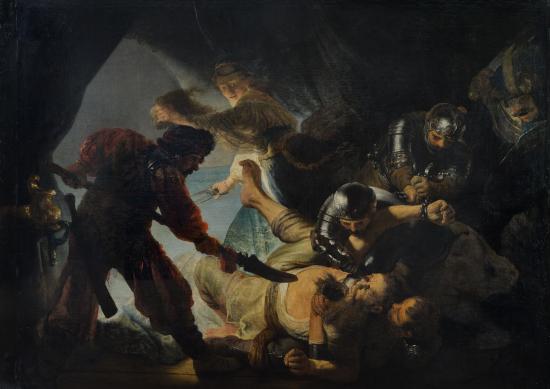Rembrandt's "The Blinding of Samson" will be restored

The Städel Museum in Germany announced the start of extensive conservation and restoration measures, supplemented by intensive scientific research, on one of the most important works in its collection: The Blinding of Samson (1636) by Rembrandt Harmensz. van Rijn.
This monumental history painting, measuring over two metres in height and more than three metres in width, is one of the central masterpieces of European art history. Previous restorations and natural ageing processes have left their mark on the painting. The conservation and restoration measures now planned, which will take place over the next three to four years, offer a great opportunity to bring Rembrandt’s masterpiece back to life in all its depth and expressiveness.
Philipp Demandt, Director of the Städel Museum: “Rembrandt’s The Blinding of Samson is a masterpiece of international standing and one of the key works in our collection of 17th-century Dutch painting. We are therefore all the more grateful to Bank of America for making this urgently needed restoration possible as part of its Art Conservation Project. This funding is a vital contribution to the preservation of our cultural heritage and ensures that this extraordinary work will continue to be experienced in all its splendour in the future.”

Workshop view Rembrandt's “The Blinding of Samson”
Planning for this project began as part of the exhibition “Call Me Rembrandt! Creativity and Competition” (2021–22). Jochen Sander, Head of German, Dutch and Flemish Paintings before 1800, emphasizes: “With the special exhibition, ‘Call Me Rembrandt! Creativity and Competition’, and the accompanying research colloquium, ‘Rembrandt in the Mirror of New Technological Investigations’, the results of which were recently published in ‘ArtMatters. International Journal for Technical Art History’, we have not only opened up new perspectives on Rembrandt’s work but also laid the foundation for a further research project. This project is the logical next step in the scientific examination of a major work in our Old Masters Collection.”
“Our goal is to restore Rembrandt’s painting to its original intensity while ensuring the long-term preservation of the painting’s substance. Every measure is carefully tailored to the original techniques and materials in order to preserve the work as the artist intended. Every measure will be carefully tailored to the original techniques and materials in order to preserve the work as intended by the artist’, explains Stephan Knobloch, Head of Art Technology and Restoration at the Städel Museum.
Main Image: Rembrandt's, “The Blinding of Samson“, 1636
